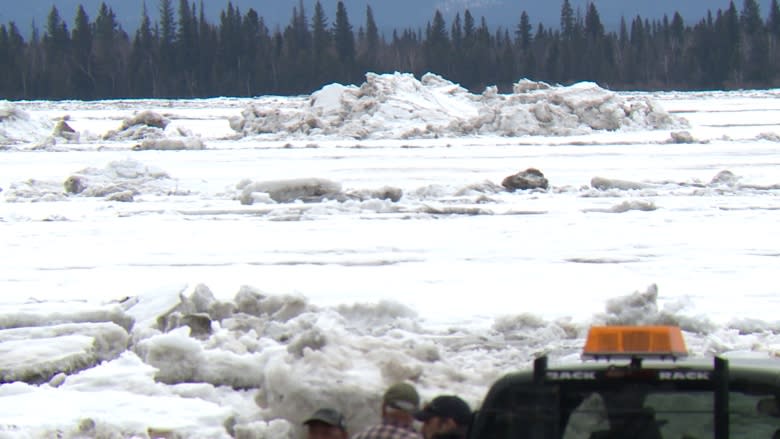Winnipeg prof to conduct world-first ice jam research
A new "fancy laser" system is on its way to the river city, and the equipment will allow a University of Manitoba professor to do world-first research into how ice jams form.
The $160,000 grant from the Canada Foundation for Innovation's John R. Evans Leaders Fund could have a huge impact in Manitoba, which regularly experiences flood-producing ice jams, said Karen Dow.
"For me, seeing an ice jam form, it's a really dynamic and interesting and cool thing. And being able to be on the leading edge of this research and to be able to contribute to something that impacts my home is really, really very exciting."
Dow, a civil engineering professor, said the grant will buy equipment that has never been used for ice jam research before.
"It's a fancy laser system, basically. So you take this high-powered laser and you shine it into the water, and in the water you put these tiny silver particles, so the laser is going to shine on those particles and illuminate them so that they're nice and bright.
"Then you take a high-speed camera, and you take pictures really close together, so you can track the movement of those particles. And by tracking the movement of those particles, you can see how water moves around different kinds of obstructions."
The equipment, called a 3-D tomographic particle image velocimetry system, will allow her and her research team to study ice jams in a safe, controlled environment.
"In the field, it's really dangerous to get out there and really measure what's happening underneath these ice jams," she said. "And logistically, it's pretty impossible to get out there when the ice jam is forming to measure what that flow looks like. And because it can release so rapidly, it's really, really dangerous.
"What we're going to do is simulate an ice jam in a lab-controlled environment and use this technology to measure the flow underneath a variety of different ice covers in our lab system, not in the field."
In the lab, researchers can control flow rate, water depth, ice thickness, ice roughness and more. From there, they can look at how flows change under different conditions — which will lead to better models and ultimately, better predictions.
"It's always dramatic and it's super complex," said Dow. "And the other thing is it happens so quickly. It can happen within, literally, like, hours. You'll see metres of water rise, and then it can release really quickly, which is going to send a surge of water and ice downstream, which is really dangerous for our community."
"The end goal is to better understand the physics of how that water moves underneath these ice covers. Then we can come up with better equations that are based on actual physics, not on limited observations that we've had to make in the field.
"It's ultimately going to impact our whole province here."
Dow said no one else on the planet is using this equipment to do this kind of research.
"There's nobody else using this to look at any kind of river ice engineering so this would be the first, literally in the world, to do this research."



